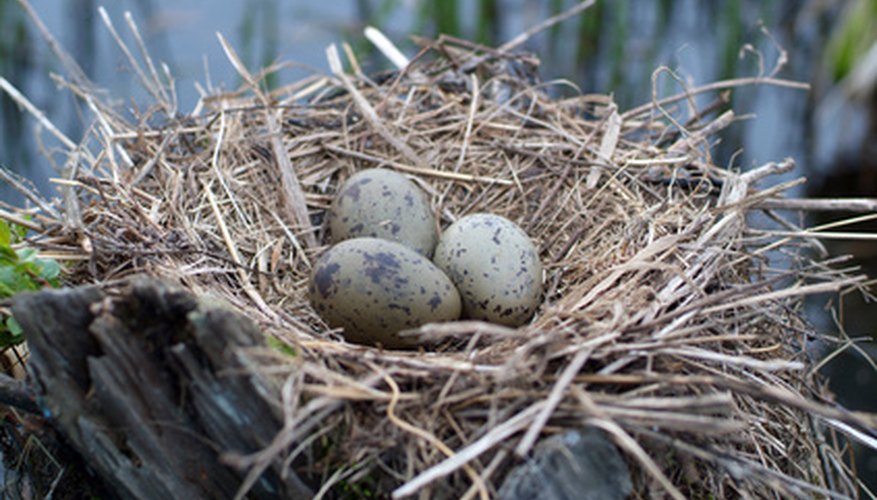Identifying bird eggs isn't as challenging as it may seem, since bird eggs vary in appearance in a surprising variety of ways. Birding websites and field guides provide helpful assistance in British bird-egg identification.
Egg Shape
The shape of a bird egg is an important clue in identifying the bird species to which it belongs. British Garden Birds says that most birds produce familiar egg-shaped eggs, like smaller versions of chicken eggs. Others, like the tawny owl, lay nearly round eggs. The eggs of cliff-nesting birds, such as coastal puffins and kittiwakes, have pointy ends, so the eggs tend to roll in a circle if disturbed. The British Trust for Ornithology Web mentions that aerial species of birds, like swallows and hummingbirds, lay long, elliptical-shaped eggs.
- The shape of a bird egg is an important clue in identifying the bird species to which it belongs.
- The eggs of cliff-nesting birds, such as coastal puffins and kittiwakes, have pointy ends, so the eggs tend to roll in a circle if disturbed.
Location of Nests
The location of an egg-filled nest can also pinpoint possible bird species. Birds such as peregrines, golden eagles, choughs, puffins, gulls and razorbills are cliff nesters. Eggs in tree nests might belong to chaffinches or siskins, while wrens, swifts and house sparrows make their nests along rooflines or within holes in buildings. Some birds, such as marsh tits and treecreepers, lay their eggs in hollow or hole-studded trees.
- The location of an egg-filled nest can also pinpoint possible bird species.
- Eggs in tree nests might belong to chaffinches or siskins, while wrens, swifts and house sparrows make their nests along rooflines or within holes in buildings.
Colour, Camouflage and Markings
Many birds, like the plover or tern, lay their nests in the open, states British Garden Birds, and therefore need heavily camouflaged speckled or spotted eggs to blend in with their surroundings. A white, creamy or pale blue egg usually comes from a nest in a dark, protected area, says Newton's Ask a Scientist. Great-spotted woodpeckers or kingfishers that lay eggs in sandy tunnels have very light-coloured eggs.
